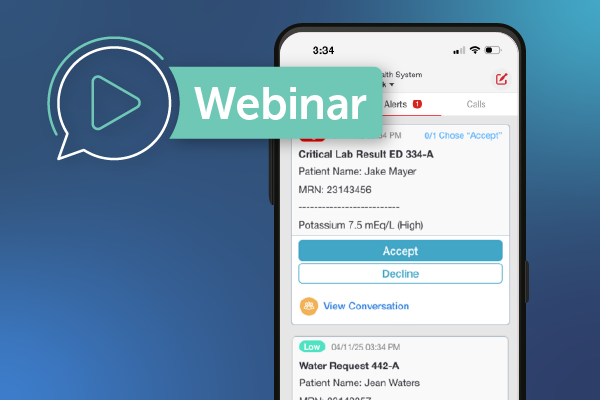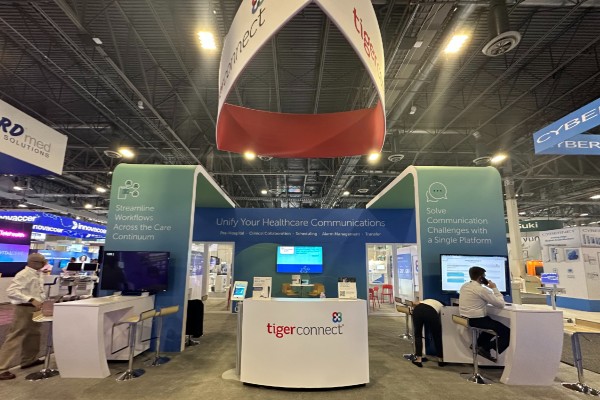
Clinical Integration Best Practices for Improved Patient Care
Now that electronic medical records have finally replaced old-school paper records in a file cabinet, health information technology (HIT) and clinical system integrations have become a cornerstone for effective care coordination [2]. Clinical integration enables care coordination across providers, patients, and time to deliver effective, patient-focused care. The Institute for Healthcare Improvement notes four key benefits of clinical integration [3]:
- Improved patient quality of care and satisfaction
- Better population health
- Reduced healthcare costs
- Increased provider satisfaction
Healthcare organizations include dozens of specialists and teams of nurses, so smoothly running patient care is often a challenge. Strong clinical integrations promote better communication among healthcare providers so patients can receive optimal care. Healthcare workers continue to struggle with burnout from COVID-19, which makes care team coordination imperative.

Turbo Charge Your EHR
Learn how healthcare collaboration technology makes EHR data actionable to accelerate care delivery.
Poor clinical integration is costly
Poor communication is an expensive problem – in terms of patient morbidity, mortality, and expenditure – inefficient communication costs around one million dollars every year. Ineffective or absent communication can also lead to poor quality outcomes for patients. A report on medical malpractice in America showed that communication problems contributed to a loss of nearly 2,000 patient lives and $1.7 billion. [4]
HIPAA violations for non-compliant healthcare facilities or non-secure communication methods are also expensive. Penalties range from $50,000 to $250,000 per violation and can reach a million dollars for a healthcare facility or system.
Robust clinical integrations allow a patient’s electronic health records (EHRs), including exam information, scans, general medical history, medication information, and lab results to be easily accessible by healthcare providers so they can make informed decisions regarding care. Care Coordinators, Transition Coordinators, and other healthcare team members need the same information outside the hospital to continue a patient’s treatment and ensure the patient has the best chance toward optimal health and well-being.
Clinical integration leads to improved outcomes
Effective clinical integrations for Care Coordination isn’t just about saving money; it also influences better patient outcomes. One study found that hospitals utilizing clinical integrations for care coordination reported a 41% reduced mortality rate compared to the expected mortality rate. In contrast, hospitals lacking good clinical integration and communication faced higher patient mortality rates —58% higher than predicted mortality [1].
Clinical systems integration for improved communication and Care Coordination enhances the quality of patient care. In addition to a reduction in mortality rates, better patient outcomes and healthcare system benefits include:
- Decreased days spent in the hospital. One hospital notes a decrease from 4.24 to 3.37 days spent in the hospital [1]
- Reduced costs. A study indicated that in a year, the cost per admission dropped from $6,723 to $5,919 [1]
- Decreased readmission rate. A TigerConnect client reported a 50% decrease in its readmission rate from 12% to 3-5%
Other benefits for healthcare professionals include:
- Better communication and collaboration
- Greater provider and nurse satisfaction
- Increased responsiveness among healthcare professionals
- Enhanced patient satisfaction scores
Improved satisfaction among healthcare professionals is no small feat; nurse shortages affect patient care across the United States. Enhanced clinical integrations benefit everyone making up the care spectrum—both on the patient side and the healthcare professional side. Furthermore, healthcare systems that implemented TigerConnect in their clinical integration strategy noted improved efficiency and increased revenue.
TigerConnect clinical integrations
The benefits discussed above give rise to several features that TigerConnect offers to healthcare facilities within a single clinical communications platform. These specific features include:
- EHR integrations
- Nurse call systems
- Physiological monitoring
- PBX integrations
- Lab and imaging integrations
- Smart bed notifications
- And more
Clinical integration improves many aspects of patient care and also leads to improved satisfaction among healthcare professionals. The “story” of medicine is documented via electronic medical records, so optimizing how different aspects of this record can be added to and accessed by medical professionals for better communication is one of the main benefits of clinical integration.
A single patient can undergo different medical procedures, require many prescriptions, and interact with dozens of doctors and nurses. This information needs to be accurately recorded and easily accessible for future visits across the care continuum.
Turbocharge your EHR
Learn how to successfully integrate EHRs with your health systems. Healthcare facilities using TigerConnect reported $6.2 million in savings and a 50% reduction in time spent filling prescriptions. Save money, save lives, and improve the well-being of healthcare employees. Download the free guide today to get started.
References
- McKay, Cheryl A. MSN, CCNS, RN; Crippen, Lori MSN, RN Collaboration Through Clinical Integration, Nursing Administration Quarterly: April 2008 – Volume 32 – Issue 2 – p 109-116 doi: 10.1097/01.NAQ.0000314539.44488.e6
- Clinical Integration – The Key to Real Reform. American Hospital Association February 2010. Retrieved from https://app1.unmc.edu/PublicAffairs/TodaySite/Images/pressrelease/ClinicalIntegrationTheKeytoReform.pdf
- The IHI Triple Aim. Institute for Healthcare Improvement. 2021. Retrieved from https://www.ihi.org/Engage/Initiatives/TripleAim/Pages/default.aspx
- Budryk Z. Healthcare miscommunication cost $1.7B–and nearly 2,000 lives. FierceHealthcare. February 1, 2016
Featured Resources
Related Articles













